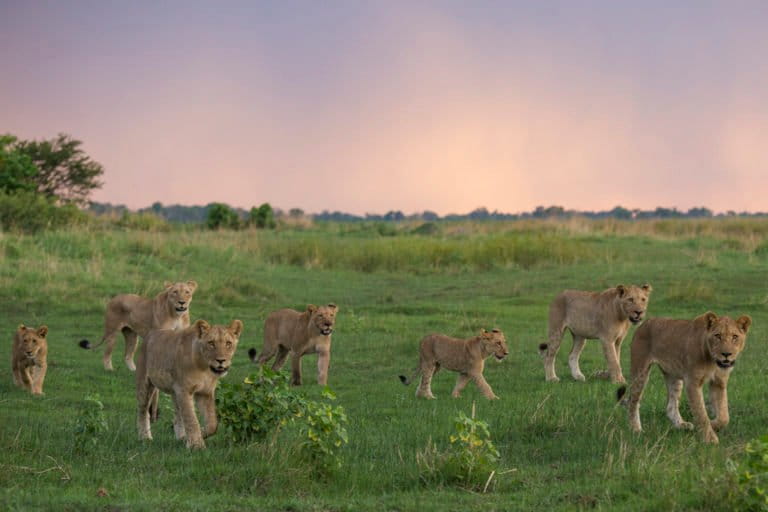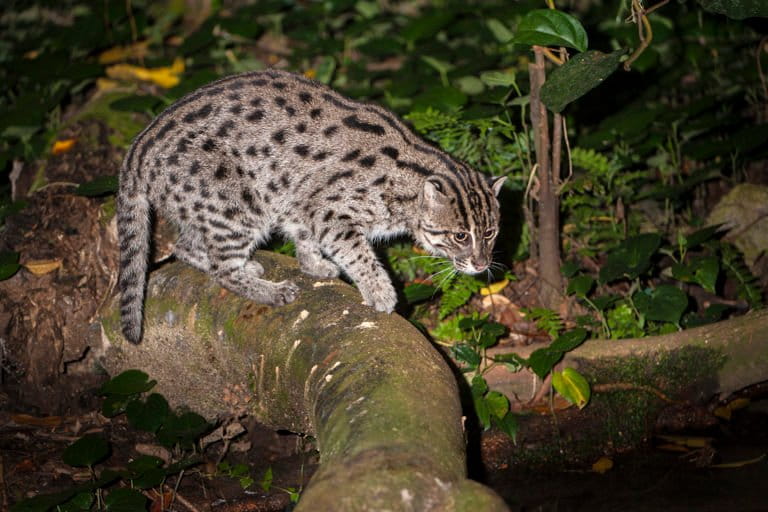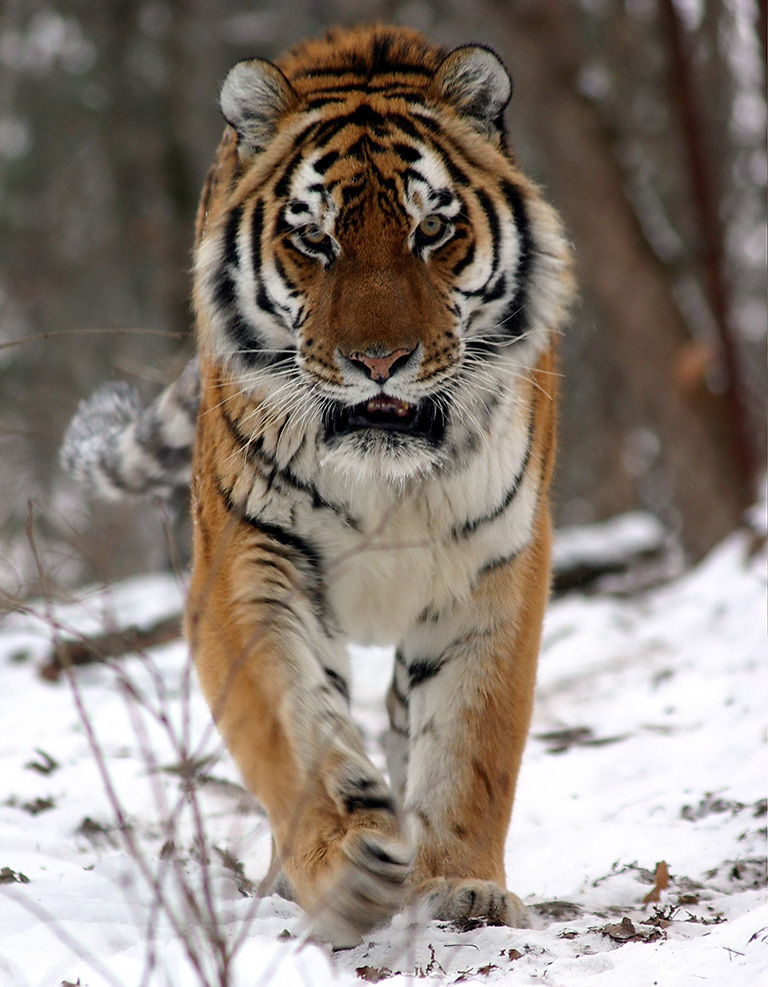
- Delegates are meeting later this week at the United Nations Climate Change Conference to the debate the future of life on Earth as we know it, through the lens of how to take action on climate change.
- Jonathan Ayers, Chair of the Board of Directors for wild cat conversation organization Panthera, makes a case for expanding efforts beyond combatting climate change: Addressing the global extinction crisis.
- “For far too long, the crisis of biodiversity loss has been largely overlooked and deprioritized,” Ayers writes. “If we are to earnestly protect the planet, environmental dialogue and focus must shift to one in which the climate change and biodiversity conservation crises are regarded and funded as two sides of the same coin.” Ayers says that cats are a great place to start when it comes to conserving ecosystems and staving off extinction.
- The views expressed are those of the author, not necessarily Mongabay.
Hurricane Ida’s warpath is the latest in a litany of natural disasters, estimated to have cost the world $210 billion in damage in 2020, that is shining a spotlight on climate change. Given extensive air time and word counts by global news outlets, a perpetual stream of climate reports described as “a code red for humanity” makes it virtually impossible to avoid the subject of climate change dollars and damage.
Without question, climate change is a threat necessary to address with vigor for the future of all living creatures, as many plan to do in just a week’s time at the United Nations Climate Change Conference. Yet, the world’s focus on this issue is cannibalizing much of the attention and dollars required to preserve the planet’s biodiversity, which loses precious ground every day to population growth and the resulting overexploitation of species and habitats. And believe me, you don’t need a trip to space to understand the beauty, importance and fragility of our planet’s most critical ecosystems.

We must move beyond a narrative that focuses solely on climate change. For far too long, the crisis of biodiversity loss has been largely overlooked and deprioritized. This occurs even as conservationists have desperately rung alarm bells about the one million species at risk of extinction due to human activities, part of what many predict is the sixth mass extinction in our planet’s history.
If we are to earnestly protect the planet, environmental dialogue and focus must shift to one in which the climate change and biodiversity conservation crises are regarded and funded as two sides of the same coin. Big cats – the charismatic, keystone species of the world – can be biodiversity’s champions.
Climate and Conservation Cash
President Biden’s 2022 budget proposal includes over $36 billion to fight global climate change. Globally, think tank Climate Policy Initiative reported that climate finance reached $546 billion in 2018, which is advertised as inadequate to keep climate change within safe thresholds.
In comparison, as of 2019, global biodiversity conservation received $124-143 billion annually, although the sector is estimated to require an annual budget of $722-967 billion. That’s a $711 billion annual gap. Put in another way, conservation is in need of more than four times the amount currently invested. Species conservation – one of the ultimate means to preserve the planet’s biodiversity – receives just 2% of this funding.

And with its greater funding, the climate sector overwhelmingly supports a rather discrete set of projects: renewable energy generation (solar and wind farms) and low carbon transport (rail and transit projects, electric vehicles). Conservation funds, meanwhile, are parceled out between activities ranging from natural water supply protection (our 8-10 daily glasses) to the training of anti-poaching rangers to patrol protected areas.
Two Sides of the Same Coin
Just as ‘global warming’ is now ‘climate change’, the environmental narrative must shift to one in which climate change and conservation are henceforth eternally uttered in the same breath. Conserving biodiversity will allow the planet to more robustly weather the impacts of climate change and mitigating climate change will ultimately protect plant and animal life. One can’t be solved without the other.
A now unfortunately familiar story of biodiversity loss contributing to climate change is deforestation leading to dangerous levels of carbon emissions. And while reforestation is not the silver bullet to solve climate change (as fossil fuel emission cuts and other actions are critical), it can certainly help steady the needle, while breathing life back into the planet’s biodiversity.
Beyond its impact on our species, climate change is similarly fueling loss of other life on Earth. A 2020 study showed that one-third of all plants and animals could be extinct in 50 years if temperatures rise high enough, with many species unable to migrate to more hospitable territory. Just last month, new findings indicated that the emperor penguin may be one such victim, joining the polar bear as a poster child for climate change rather than a fixture of nature documentaries.
Again, a one-size-fits-all solution to these crises does not exist. Having said that, wild cat conservation provides a winning strategy for preserving biodiversity, reducing the severity of climate change and allowing critical habitats to adapt to climate change. Flagship, apex, keystone, indicator species, guardians and ecosystem engineers are all terms utilized by the scientific community to convey the extraordinary importance of wild cats to their vibrant habitats and the overall planet. Wild cat ranges account for nearly one third of Earth’s terrestrial surface. Protecting these species is the most efficient way to protect thousands of plant and animal species, including humans. With cats, you are getting the biggest bang for your buck.

Although little-known, protection of the fishing cat, an evolutionary marvel, involves conservation of mangrove forests in South and Southeast Asia that are home to rich plant and animal life and that are capable of sequestering at least four times more carbon per unit area than rainforests and upland forests. The same is true of the mighty tiger, with a range extending from the mangrove swamps of Bangladesh to the Siberian forests of the Russian Far East, where snow is fast reducing.
Cat Charisma
Lucky enough, not only are the 40 species of wild cats keystones in the architecture of our planet, they are also keystones in numerous cultures around the globe. From royal crests to national soccer teams, wild cats are intertwined in human history and society. And like it or not, vanity plays in to the species whose survival our dollars support. Naturally, we gravitate towards conserving wildlife with which we identify, regard as beautiful (beasts) and that remind us of our own treasured lap cats.
It’s a fact that climate change solutions are largely addressed by national governments and the private sector via policy and economic paradigm shifts, leaving the individual with fewer options to reverse the crisis. The psychology of charity suggests that conversations of rising Celsius can seem faceless and abstract, leaving potential donors and activists hopeless rather than engaged. Charismatic and stripe-faced species like wild cats are powerful symbols and ultimately, tools, to mobilize people to take concrete, tangible actions to protect the planet. And, unlike the doom and gloom pronounced by climate change headlines, there are so many stories of cat populations returning to their former glory to keep optimism for our planet’s future alive.

It must be said that the scientific community can transform these species into even more powerful tools if conservation marketing is improved to convey the cultural, intrinsic, philosophical and economic value of plant and animal life, estimated to be worth $125-145 trillion USD per year.
In October 2019 I suffered a traumatic accident that left me paralyzed from the neck down. In the midst of intensive therapies, I found purpose in wild cats, Panthera and, ultimately, conservation. Regardless of the origins of COVID-19, I believe that the global trauma experienced as a result of the pandemic also offers a silver lining in our rethinking of our relationship with nature. This includes a reimagination of current societal and economic paradigms – including globalization and natural resource use – that are fueling climate change and biodiversity loss.
With wild cats as our icons, let us join together and grow the chorus that is singing the importance of solving the crises of biodiversity conservation and climate change together.
Cats, charisma and climate change (commentary)
Source: Trends News

0 Comments